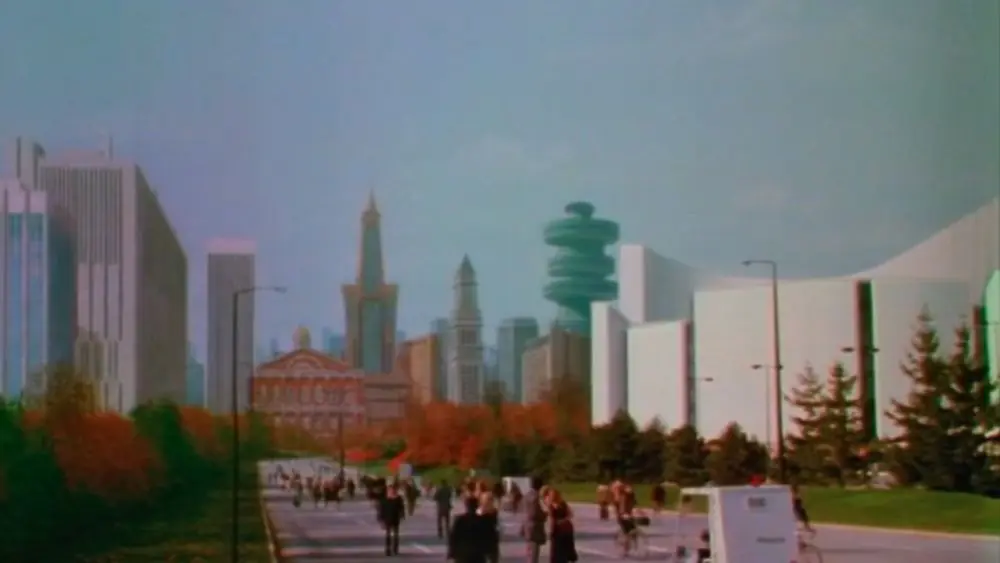THE LAST CHASE: Could this science fiction become a prophecy?

“The Last Chase” suffers from plot holes, a formulaic script, and poor acting, but its prophetic value may increase with each passing year.
The story is set in 2011, twenty years after a deadly virus pandemic has decimated the global population. The United States has become a police state, where citizens have lost most of their personal rights and freedoms, and an extensive mass surveillance system monitors their every move. The totalitarian regime has also banned the ownership and use of private cars, boats, and aircraft under the pretext of fossil fuel shortages. As a result, all private vehicles have been confiscated by the government. When former race car driver Franklyn Hart learns that California has seceded from the regime and declared itself a free state, he assembles a Porsche from parts he had hidden in a garage storage area and sets out on a journey from the East Coast to the West. Hart is accompanied by Ring, a teenage computer genius wanted by the police. The authoritarian government will stop at nothing to capture the fugitives.

Christopher Crowe began writing a dystopian novel about the collapse of civilization back in the 1970s, but at a friend’s urging, he adapted it into a screenplay, which he sold to Argosy Films for $50,000. Crowe is credited in the film under the pseudonym C.R. O’Christopher, alongside two other screenwriters—Roy Moore and Martyn Burke, with the latter also directing “The Last Chase”. The budget for this American-Canadian production was estimated at just under $5 million, and the cast included Lee Majors (Hart), Chris Makepeace (Ring), and Burgess Meredith (Williams). It was also decided that Hart would drive a Porsche 917 CAN-AM race car. Filming took place in the U.S. and Canada from October to December 1979. The American premiere of “The Last Chase” took place in April 1981, and two months later, the film was also released in Canada. It was a financial failure in both countries.
Burke admitted that some scenes in his film were heavily inspired by Stanley Kubrick‘s work: the shot of a padlocked fuel pump at an Exxon station was a nod to the black monolith from “2001: A Space Odyssey” (1968), while the surveillance center’s design paid homage to the war room from “Dr. Strangelove” (1964). However, these are merely surface similarities. “The Last Chase” more closely resembles a combination of Richard C. Sarafian’s “Vanishing Point” (1971) and George Miller’s “Mad Max” (1979). From the former, it borrows the cross-country chase through America, and from the latter, themes of a dystopian future and fuel crisis. The deadly plague theme, on the other hand, recalls film adaptations of Richard Matheson’s novel “I Am Legend”, such as “The Last Man on Earth” (1964) by Ubaldo Ragona and Sidney Salkow, and “The Omega Man” (1971) by Boris Sagal.

Many elements of “The Last Chase”‘s plot raise valid questions. Hart refuels his car at abandoned gas stations where residual fuel is still in underground tanks, but after two decades, this gasoline would have expired and become useless (and why didn’t the totalitarian regime bother to remove those remnants or demolish the stations?). Mechanics with no prior experience with airplanes manage to repair a Korean War-era jet (1950–1953), nearly sixty years old. They also find fuel for the plane, and it is skillfully piloted by an elderly alcoholic. Roads and highways, after two decades of disuse, are in excellent condition, and although no one uses them, they are lined with surveillance cameras. In critical moments, Hart is saved by the teenage Ring, whose technological prowess rivals that of MacGyver.
There are more such inconsistencies in “The Last Chase”, and all of them stretch plausibility, even with the suspension of disbelief. Yet, this film remains eerily relevant. Global surveillance is a reality that few reasonable people dispute. We saw a near-voluntary surrender of some civil liberties during the COVID-19 lockdowns. Additionally, there is the looming issue of the depletion of global oil reserves (predicted to occur between 2052 and 2094, depending on the source) and the plans of world governments to ban the sale of new fossil-fuel-powered vehicles by 2050, replacing them with electric ones (the European Union will implement this directive in 2035). Even today, certain city districts have banned older gasoline-powered cars. So, are we heading for a future similar to that portrayed in this forgotten film from over forty years ago?

